International Journal of Aquaculture and Fishery Sciences
The effect of dietary aloe vera powder on growth performance and survival rate of Oreochromis niloticus fries
Jared J Ochingo*, Mercy Chepkirui and Vivian Kemunto
Cite this as
Ochingo JJ, Chepkirui M, Kemunto V (2023) The effect of dietary aloe vera powder on growth performance and survival rate of Oreochromis niloticus fries. Int J Aquac Fish Sci 9(1): 004-011. DOI: 10.17352/2455-8400.000086Copyright License
© 2023 Ochingo JJ, et al. This is an open-access article distributed under the terms of the Creative Commons Attribution License, which permits unrestricted use, distribution, and reproduction in any medium, provided the original author and source are credited.This study aimed to evaluate the impact of dietary aloe vera on the growth performance parameters of Oreochromis niloticus fry. A feeding trial was conducted for a month at KMFRI Sang’oro Aquaculture station and 135 fish were randomly assigned to three treatments, including a Control group (C1), a group fed with 1% aloe vera (A1), and a group fed with 2% aloe vera (B1). The growth parameters, including Specific Growth Rate (SGR), Feed Conversion Ratio (FCR), Weight Gain (WG), and Survival were measured. The results indicated that the administration of aloe vera at different concentrations significantly improved the growth performance of fish. The SGR, FCR, and WG were significantly higher in fish fed with Diet B (2% aloe vera) followed by those fed with Diet A (1% aloe vera) compared to the Control group. The results confirmed the Alternative hypothesis that there is a significant difference in the growth performance of fish fed with various incorporations of aloe vera. Therefore, the study recommends the use of aloe vera as a growth promoter in aquaculture, particularly at higher incorporation rates of 2%.
Introduction
Aquaculture is an important source of animal protein for human consumption and has become increasingly important in recent years due to the growing demand for fish and fish products. Tilapia species constitute a major and important item in Kenyan fish farming. However, the increased intensification of aquaculture has led to many constraints including, poor growth, and poor health. This has made it hard for fish farmers to turn the biological benefits associated with intensive farming systems into economic gain.
Throughout the years, absolute world fishery production decreased, and the human utilization of sea-going items expanded [1]. The decrease in catch fisheries was mostly made up for the quick development of the aquaculture industry. The need for improved feed proficiency and growth performance of cultured organisms is substantial for various sectors of this industry [2]. There is an upsurge in the clinical use of indigenous chemicals as they are liberated from genuine reactions [3] reported an enormous number of plants having known immune modulatory activity. On the off chance that growth performance and feed productivity are increased in aquaculture, the expenses of production are probably going to be decreased.
There is a large number of feed additives accessible to improve fish growth performance in the Kenyan markets and a portion of these additives utilized in feed factories are concoction items particularly hormones and anti-infection agents which may cause negative effects on consumers. World Health Organization supports the use of medicinal herbs and plants to substitute or limit the utilization of chemicals through the worldwide pattern to return to nature. Plans to utilize regular materials, for example, Medicinal plants could be generally acknowledged as feed additives to improve the proficiency of feed use and aquaculture growth performance. In the most recent decade, a few investigations show the positive outcomes of dietary healing plants and feed additives on growth and feed utilization in fish (Turan and Akyurt, 2005). Aquaculture requires top-notch feeds which ought to contain important supplements as well as correlative feed additives to promote the growth performance of fish faster.
aloe vera is one of the many aloe species that has been acclaimed to manage several health conditions in humans (Abdullah, et al. 2003) it has been used directly to cure ailments like cuts, minor burns and inflammation [4].
Overall fish and shellfish [5] cultures are exposed to numerous infections that lead to high losses in fish farming. As of late the use of medicinal plants from various species in the aquaculture industry is currently proving to be effective [6]. Likewise, to deliver fish free from any chemical compounds of general well-being risk. One of the most encouraging regular mixes is polysaccharides found in aloe vera which can improve the development of fish by improving the gut microflora in this manner expanding feed utilization and digestibility.
The wide adoption use of chemicals to maintain the growth and immune system of fish has become expensive and unsustainable. Therefore, improvement of production in aquaculture should focus on environmentally friendly and sustainable methods of increasing growth performance through the use of naturally available plants such as aloe vera.
The use of immunostimulants as feed supplements in aquaculture has been attempted for a long time. Studies have shown that certain plants are effective in improving immunostimulatory effects in fish and as growth promoters, especially tilapia. Providing feeds that would meet the dietary requirements of fish has faced several innovations and with the increasing scientific research and inventions, attempts to exploit the available natural resources are attracting attention. The inclusions are available in these plants have been suggested to contain nutritious value and could aid in fish development by promoting growth performance and also increasing the immune system. The fact that these herbs are natural presents a considerable belief in the safety of feeds formulated using them and also adds an important value to the fish immune system of the fish [7].
Studies have revealed the efficacy of plants to boost the immune system and as growth promoters in different species including tilapia, trout, and catfish among other species considered good for aquaculture. In Kenya, little information on the current development is available, despite the widely known use of medicinal herbs by a human. The use of chemicals such as voogle, Aquamin as growth promoters and to increase the immune system is currently under great criticism from consumers due to the revelations that some chemicals are never synthesized and often, due to bioaccumulation, are retained by the fish hence present health risks to the consumers. The chemicals also cause a lot of pollution. The outcry for safe foods is attracting much attention and to remain relevant in light of the continuous developments, one has to align with the new face of technology. There is currently ongoing research in an attempt to reduce dependence on the use of chemicals as growth promoters in fish.
aloe vera in aquaculture
aloe vera is referred to as a healing plant and is used to treat different infections e.g. bacterial and fungal. Aloe in aquaculture has been used to enhance feed utilization and digestibility and it has also been used for antistress and antioxidant actions [8] demonstrated that high dosages of dietary aloe vera supplement had a constructive outcome on rainbow trout development execution in Goldfish [9] also completed a test on the impacts of dietary aloe vera and reported that dietary aloe vera increased the development, and feed use proficiency, and these backed the suspicion that restorative plant extracts can improve growth performance in fish by upgrading their supplement edibility, ingestion and osmosis limit through improved stomach related catalyst circulation.
The growth performance in fish can likewise be credited to a wide scope of polysaccharides, for example, Acemannan, galactan, cellulose, gelatin and glucuronic corrosive that are available in A. Vera leaves. The polysaccharides are known to have prebiotic properties, which benefit the host by animating the development or action of one or a set number of microscopic organisms species effectively inhabitant the gut subsequently improving the hosts gut microflora and at last development through improved feed use and stomach related compound exercises. In this way, the utilization of aloe vera has a few other related advantages to fish growth.
Several studies have investigated the effects of aloe vera on fish growth and health. In a study conducted by Farahi, et al. (2014), the effect of aloe vera gel on the growth performance and immune response of rainbow trout was evaluated. The results showed that dietary supplementation of aloe vera gel at a level of 1% significantly improved the growth performance and immune response of rainbow trout.
Similarly, in a study conducted by Kumar, et al. (2017), the effect of aloe vera gel on the growth performance of common carp was evaluated. The results showed that dietary supplementation of aloe vera gel at a level of 1% significantly improved the growth performance of common carp.
Methodology
Materials and methods
Study area: The experiment was conducted at Kenya Marine and Fisheries Research Institute (KMFRI), Sangoro station, situated within latitude 0°21’12.81’’ E, Longitude 34°48’26.53’’ S. The performance experiment was conducted in the hatchery lab where the Nile tilapia fry (0.3g - 1g) were reared and fed with the inclusions of aloe vera powder Figure 1.
Diet preparation
First aloe vera was obtained from a local farmer, the leaves were washed with water. The sharp ends were then cut off, and then the outer layers were also peeled off. The inner layers were then dried in a greenhouse at high temperatures (50 0C). The dried aloe vera was then grounded into powder using a high-speed multi-grinder. Three diets based on a formulation of 40% crude protein, were prepared to contain different levels of aloe vera. aloe vera was then incorporated into the diets as follows: 0% aloe vera (control), 10 g/kg aloe vera (group A), and 20 g/kg aloe vera (group B). aloe vera at different incorporation were added to feeds and then mixed thoroughly. Feeds were not pelletized but administered as mash in the processed form.
Experimental design
A total number of 135 Nile tilapia fry of between 0.3g - 1g body weight were acquired from the farm. The fish were placed in a holding solid tank for 2 days where they were observed and acclimatized to the exploratory conditions. After acclimatization, fish were arbitrarily allotted between 3 aquarium tanks in repeat at a density of 15 fish for each tank and kept up in ceaselessly circulated air through the tank for about a month while being fed. All fish were fed with aloe vera-supplemented feed and another group was fed with an aloe vera-free eating routine (Control). The 3 groups were named as follows;
Group 1: Control (C1,C2, C3)
Group 2: (A1, A2, A3); 1% aloe vera/kg
Group 3: (B1, B2, B3); 2%aloe vera/kg
All Groups were fed twice every day at 10% body weight at 9:30 am and 4 Pm. The number of feeds was adjusted every week, during the trial time frame (1 month).
Physical water parameters
During the experiment, the following conditions were maintained: water temperature 28.0 ± 1.5 ˚C, dissolved oxygen concentration 6.5 ± 0.5 mg/l, pH 7.5 ± 0.5, Salinity 0.02 ± 0.01, TDS 90.30 ± 1.5, Conductivity 84.7 ± 1.0. The water parameters were measured using a multi-parameter meter. All these physiological parameters were made constant through the regular exchange of water daily. In maintaining the culture water, Siphoning was conducted every morning to remove the silts and excess feeds; this enhanced the water quality of the cultured fish.
Growth Parameters measured
At the end of every week (7 days), the fish in each tank were individually weighed 24 h after the last feeding. The absolute weights and total lengths of fish were recorded using a weighing balance and a 30cm ruler. From the recorded weights of each fish, Weight Gain (WG), Specific growth rate (SGR), and Feed Conversion Ratio (FCR) were determined as pointers for growth performance using the following equations; % Weight Gain = 100 × (final body weight-initial body weight) ÷ initial body weight. FCR = complete feed given/weight gain. SGR = 100× (final weight-initial weight) ÷ length of the trial [10].
Statistical analysis
The factual distinction between every group and their duplicates was evaluated using One-route analysis of Variance (ANOVA) using Ms. Excel followed by Duncan’s different range test using statistical (SPSS 20.0) to determine the significant difference at 95% confidence level (p < 0.05) of significance.
Results
Growth
It was noted that after the two days acclimatization period, the fish gained a relative mean weight of 6.24g. The physical activity of the fish was observed as normal in the fish in the pond. After the first week of feeding with the experimental diets, there was a significantly high increase in fish weight in all the groups with the control group exhibiting a lower weight gain of 8.6g and group A (1%) seeing 8.8g weight gain. Diet B Groups (2%) had a weight gain of 10.3g. In the second week, WG for control groups was 15.5g, Diet A groups (1%) had 16.2g, and Diet B groups (2%) had 26.5g. The Weight Gain increased in all the groups from week one to week four. The FCR in all the groups was significantly different. Group B (2%) had the highest FCR (5.7524), Group A (1%) had (5.4545) and the control had the least FCR (5.1925). The same trend was observed in the following weeks. Control groups had the least FCR of (5.177), Group A (1%) had an FCR of (5.980) while Group B (2%) had the highest FCR of (6.210). In the third week, there was an increment in FCR in all the groups. The control FCR was 5.324 while Group A (1%) was 6.730 and Group B (2%) was 8.14. FCR in week four had an increase too with the Control groups having the least FCR of (8.348), groups A (1%) had (11.83), and groups B (2%) exhibiting an FCR of 12.394. Throughout the experiment, the FCR was found to have increased for all the groups. However, there was no statistical difference in the control and groups A (1%) fish. Because of the increment in FCR, it means there was a significant weight gain in all the groups. Group B (2%) had the highest average percentage weight gain of 326.582% followed by Groups A (1%) with 249.219% while the control group had 191.126%. The SGR was significantly enhanced when aloe vera at 2% was included in the fish diet and low in the control group Figures (2-10).
The growth of Nile tilapia fry in terms of Weight gain, feed conversion ratio and specific growth rate was higher as compared to the control group with (p < 0.05). The results were presented in the form of tables as follows (Tables 1-4).
This ANOVA table above breaks down the fluctuation of Total Weight (TW) into two parts: an among gathering and an inside gathering. The F-proportion, which for this situation rises to 25.545, is a proportion of the between-bunch gauge to the inside gathering gauge. Since the p -estimation of the F-test is 0.000 which is under 0.05, this implies there is a measurably huge distinction between the mean TW starting with one degree of the Diet and then onto the next at the 95.0% certainty level.
Multiple Range Tests was conducted to give a clear picture of which means are significantly different from which other (Table 5).
The table above shows that 2 homogenous groups are recognized utilizing sections of X’s. Inside every section, the levels containing X’s structure a group of means inside which there are no factually noteworthy contrasts.
To know where the difference was between the groups, LSD tests were conducted.
The table above demonstrates numerous correlation which figures out which means are essentially not quite the same as others. The base portion of the yield shows the assessed contrast between each pair of means. An indicator (asterisk) has been put close to 2 sets, demonstrating that these sets show measurably critical contrasts at the 95.0% certainty level.
The strategy presently being utilized to segregate among the methods is Fisher’s least critical contrast (LSD) system Figure 11. With this technique, there is a 5.0% danger of considering each pair of means essentially extraordinary when the genuine contrast approaches 0 (Tables 6-11).
Discussion
The impacts of the immune stimulants on growth parameters in fish are accounted for as often as possible [11]. The results of the current study indicated that the administration of aloe vera had a significant (p < 0.05) impact on the growth performance of the fish. from the outcomes, it was clear that fish fed Diet B (2% aloe vera/kg) recorded the most elevated Specific Growth rate, FCR, and %WG when contrasted with those that were fed Diet A (1%) and the Control group. Improved feed utilization, weight Gain, and growth in aloe vera enhanced diets could be ascribed to a wide range of polysaccharides, for example, Cellulose, galactan, glucuronic corrosive, riboflavin, and other fundamental and none essential amino acid. The polysaccharides are believed to contain prebiotic properties which advantage the host by invigorating the growth or activity of one or a predetermined number of microorganisms species effectively occupant in the gut along these lines improving the host’s gut miniaturized scale vegetation and eventually development through improved feed usage and stomach related compounds exercises(Chen, et al. 2003 ; Zahran, et al. 2014). aloe vera has ingestion and absorption limits through improved digestive enzyme distribution and activities.
Improvement of growth parameters following aloe vera administration in Cyprinus carpio (Common carp) has been reported before [12]. In another experiment done by (Alishahi, 2010) [13] the impacts of aloe vera in Amphilophus labiatu were investigated. The author reported that the concentrations of 0.5% and 1% of aloe vera prompted a noteworthy increase in Weight gain (WG), Food Conversion Ratio (FCR), and explicit growth rate (SGR). (p < 0.05). Prior experiments anyway uncover that incorporations at 1% or 0.1% have produced comparable outcomes (Farrag, FH, et al. 2014) [14] got comparable outcomes using ground pawpaw seed meal at various concentrations for different feeding periods.
The results of the current experiments demonstrated that administration of aloe vera powder had critical (p < 0.05) impacts on the development parameters of Orechromis niloticus each multi-week after feeding when contrasted with the Control group. These outcomes are reliable to the outcomes gotten by [15] who detailed improved growth performance, and gastrointestinal and skin morphology in Rainbow trout fed with dietary aloe vera. This information additionally underpins the investigation of Mahdavi, et al. [16] who detailed better last length and weight and development markers in treatments fed with aloe vera [15]. Conversely, aloe vera had no impact on Acipenser baerii (sturgeon) [17].
There was a significant difference in the FCR between the control and the other two treatments with (p < 0.05). The fish fed with diet B (2% aloe vera/kg) displayed a higher FCR from week one to week 4, this was because A.vera increases feed utilization and absorbability hence high FCR when contrasted with fish fed Diet A (1%) aloe vera/kg and control (C) group. This confirms the study conducted by [18] on the effects of aloe vera polysaccharide on clarius gariepinus fingerlings, he observed that the FCR was higher in aloe vera supplemented diets at 4.0%.
Survival of the fish was higher on aloe vera-supplemented diets as compared to the control group. aloe vera provides useful biologically active metabolites with various benefits such as immune system modulation (Zanuzzo, et at. 2015; Yang, et al. 2015), growth promotion, antioxidation enhancement, antidepressant, and digestion enhancement among others (Zahran, et al. 2014) [19-26]. Diet B (2% aloe vera) had 100% survival. Diet A (1% aloe vera) had 95% survival with 43 out of 45 surviving. The mortality was experienced in the Control group in the first week of the experiment, 4 fish died and this might have been attributed to stress.
Conclusion
This experiment indicated a more grounded trust in the utilization of medicinal plants as growth promoters as it affirms the alternative hypothesis generated for the study. Hence feeding with the aloe vera enhanced diets for four (4) or more weeks is viable for better growth performance in O. niloticus. All in all, the outcomes got demonstrated that O. niloticus fed with aloe vera at centralization of 2% for over about a month exhibited more noteworthy adequacy for growth performance than a lower portion of 1% and the control diet. Therefore the utilization of immunostimulants as growth promoters in aquaculture ought to be empowered and upheld completely.
Recommendations
Based on these findings, I hereby make the following recommendations;
Feeding technology should appraise the new revelations in feed formulations, especially the inclusion of dietary natural substances in the feeds fed to fish to enhance the utilization of the benefits involved.
Farmers should be encouraged to embrace the use of certain immunostimulant plants tested to be effective in the practice of aquaculture.
- Lidder P, Sonnino A. Biotechnologies for the management of genetic resources for food and agriculture. Adv Genet. 2012;78:1-167. doi: 10.1016/B978-0-12-394394-1.00001-8. PMID: 22980921.
- El-Sayed. Review of Tilapia production. 2006.
- Dua PR, Shanker G, Srimal RC, Saxena KC, Saxena RP, Puri A, Dhawan BN, Shukla YN, Thakur RS, Husain A. Adaptogenic activity of Indian Panax pseudoginseng. Indian J Exp Biol. 1989 Jul;27(7):631-4. PMID: 2632390.
- Arunkumar S, Muthuselvam M. Analysis of phytochemical constituents and antimicrobial activities of aloe vera against clinical pathogens. world j agric. 2009; 572-576.
- Divyagnaneswari M, Christybapita D, Michael RD. Enhancement of nonspecific immunity and disease resistance in Oreochromis mossambicus by Solanum trilobatum leaf fractions. Fish Shellfish Immunol. 2007 Aug;23(2):249-59. doi: 10.1016/j.fsi.2006.09.015. Epub 2006 Oct 11. PMID: 17448687.
- Mamdouh AA. Mousa. Effect of neem leaf extract on freshwater fishes and zooplankton community. A paper presented at the 8th International Symposium on Tilapia in Aquaculture. 2008.
- Lawless J, Allan J. natural wonder cure. Harper Collins publishers. 2000.
- Heidariel Se. effects of dietary aloe vera on growth performance, skin and gastrointestinal morphology in rainbow trout. 2013.
- Gabriel NN, Qiang J, He J, Ma XY, Kpundeh MD, Xu P. Dietary aloe vera supplementation on growth performance, some haemato-biochemical parameters and disease resistance against Streptococcus iniae in tilapia (GIFT). Fish Shellfish Immunol. 2015 Jun;44(2):504-14. doi: 10.1016/j.fsi.2015.03.002. Epub 2015 Mar 7. PMID: 25758848.
- Salas-Leiton E, Anguis V, Martín-Antonio B, Crespo D, Planas JV, Infante C, Cañavate JP, Manchado M. Effects of stocking density and feed ration on growth and gene expression in the Senegalese sole (Solea senegalensis): potential effects on the immune response. Fish Shellfish Immunol. 2010 Feb;28(2):296-302. doi: 10.1016/j.fsi.2009.11.006. Epub 2009 Nov 10. PMID: 19909816.
- Raa J.The use of an immunostimulatory substance in fish and shellfish farming. Review of fish science. 1996; 4:229-288.
- Mesbah MA, Foroozanfar A. Effects of aloe vera on ulcer improvement of common carp (Cyprinus carpio). collection of shahid chamran university. 2008; 31-53.
- Alishahi M. Survey on effects of various levels of aloe vera extraction growth parameters and defense systems of Amphiliophus labiates against Aeromonas hydrophila. National Conference of Aquatic animals. 2010; 1-13.
- Heidarieh M, Mirvaghefi AR, Akbari M, Farahmand H, Sheikhzadeh N, Shahbazfar AA, Behgar M. Effect of dietary Ergosan on growth performance, digestive enzymes, intestinal histology, hematological parameters and body composition of rainbow trout (Oncorhynchus mykiss). Fish Physiol Biochem. 2012 Aug;38(4):1169-1174. doi: 10.1007/s10695-012-9602-8. Epub 2012 Jan 14. PMID: 22246321.
- Heidarieh MSA. Effects of dietary aloe vera on growth performance, Skin and gastrointestinal morphology in rainbow trout. Turkish J fish AquatSci. 2013; 367-373.
- Mahdavi MH, Ghorbani R. Effects of aloe vera Extract on growth parameters of common carp (Cyprinus carpio). World Journal of medical science. 2013; 55-60.
- Wang. Effects of aloe vera powder on growth performance and plasma indices of sturgeon (Acipenser baeri). Journal of Shanghai Ocean University. 2011.
- Gabriel. Effect of dietary aloe vera on digestive enzyme activities and muscles comparison on GIFT tilapia juveniles. South African Journal of Animal Science. 2015.
- Citarasu T. herbal biomedicine a new opportunity for the aquaculture industry. Aqua int. 2010; 403-414.
- FAO. United Nations, the global aquaculture production has increased from about 28.3 million tons (FAO, 1999) to 40 mt in 2009.
- TJGB. Sex reversal of tilapia in earthen ponds. Research and Development. 1990; 35.
- Choi S, Chung M. A review of the relationship between aloe vera components and their biological effects. seminars in integrative medicine. 2003; 53-62.
- FAO. Global fisheries and Aquaculture production statistics. 2017.
- Mbugua H. The role of the department of fisheries in aquaculture development in Kenya, samaki news. Department of fisheries Nairobi Kenya. 2002.
- Paul orina JM. A Fish Farmers Manual. 2011; 45-48.
- Wang CX. Effects of aloe vera aloe veraaloe vera Powder on the growth performance and plasma indices of sturgeon (Acipenser baeri). journal of Shanghai Ocean University. 2011.

Article Alerts
Subscribe to our articles alerts and stay tuned.
 This work is licensed under a Creative Commons Attribution 4.0 International License.
This work is licensed under a Creative Commons Attribution 4.0 International License.
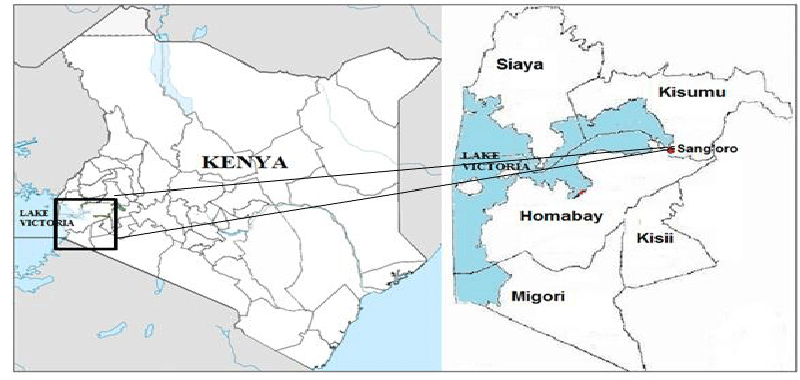
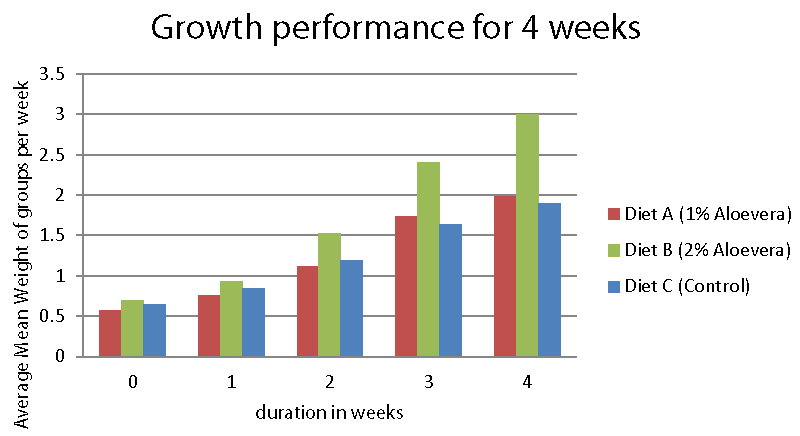
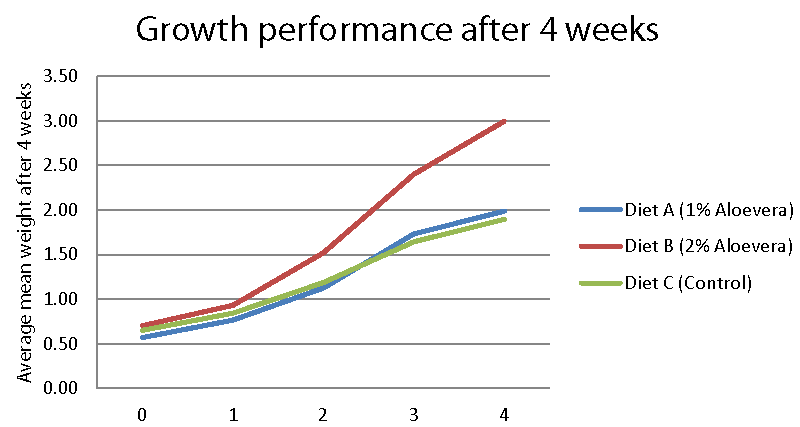
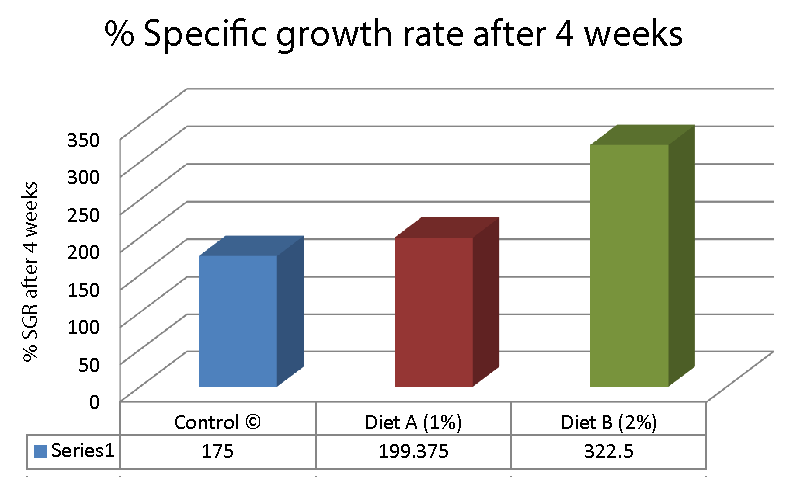
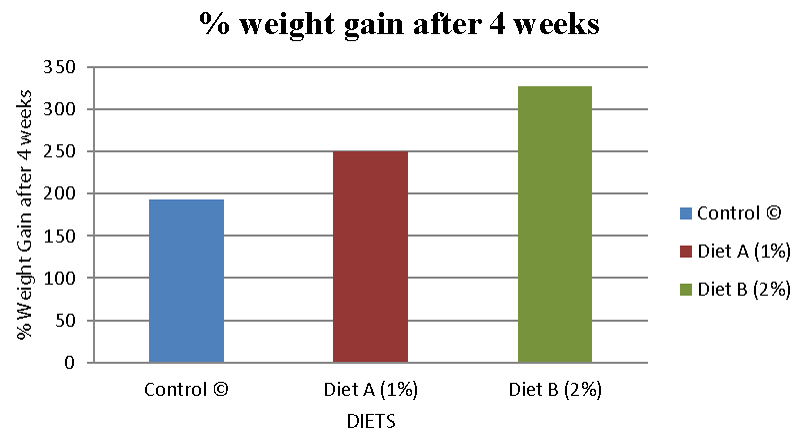
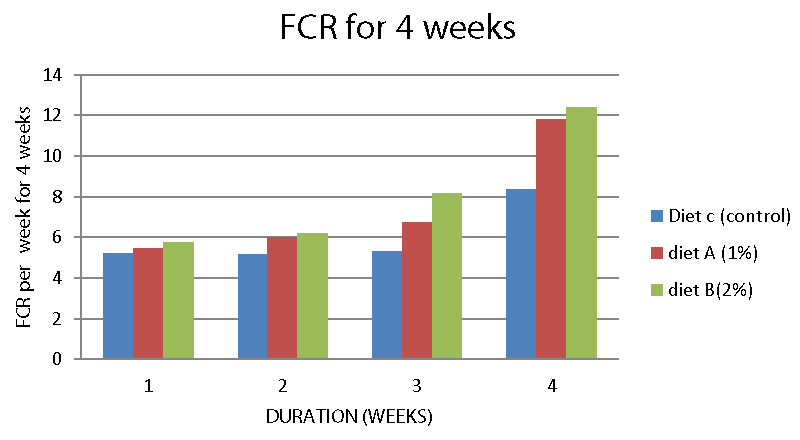
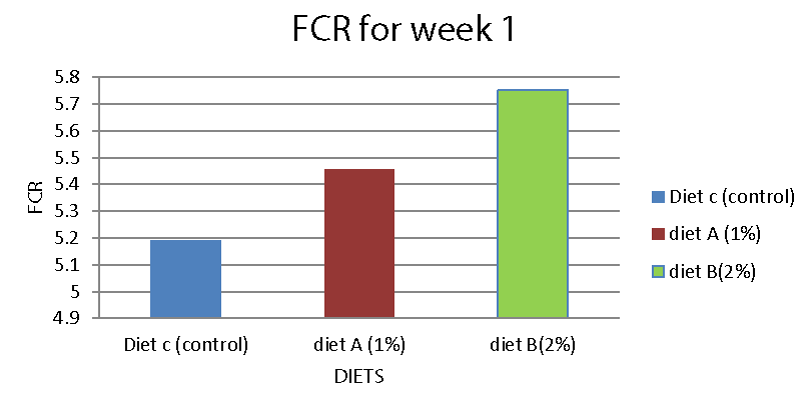
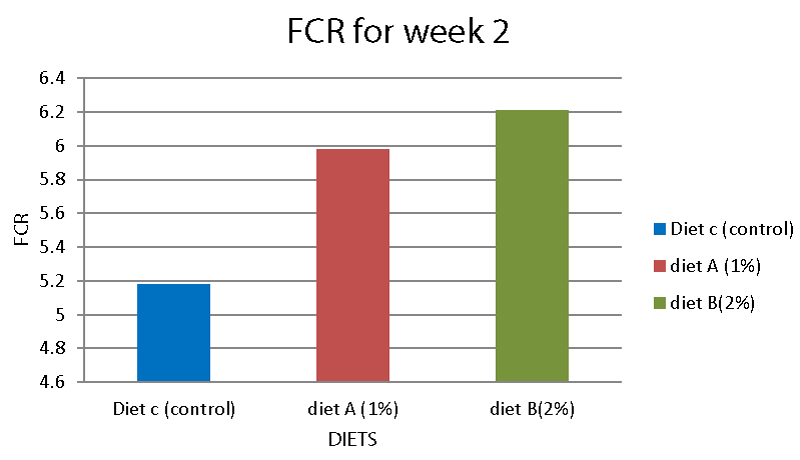
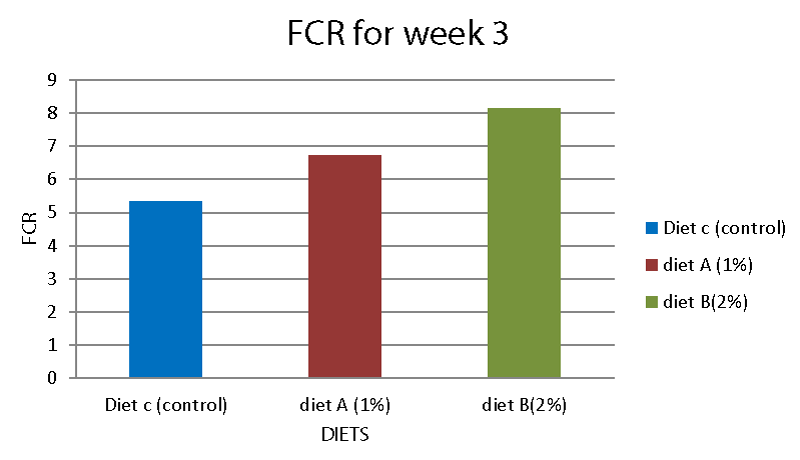
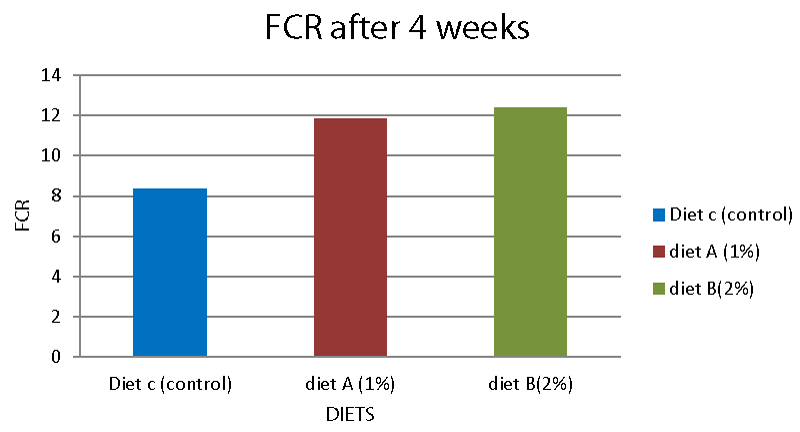
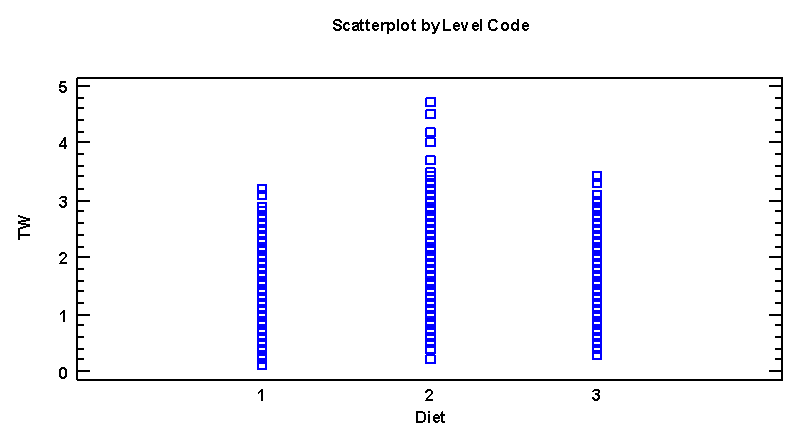

 Save to Mendeley
Save to Mendeley
